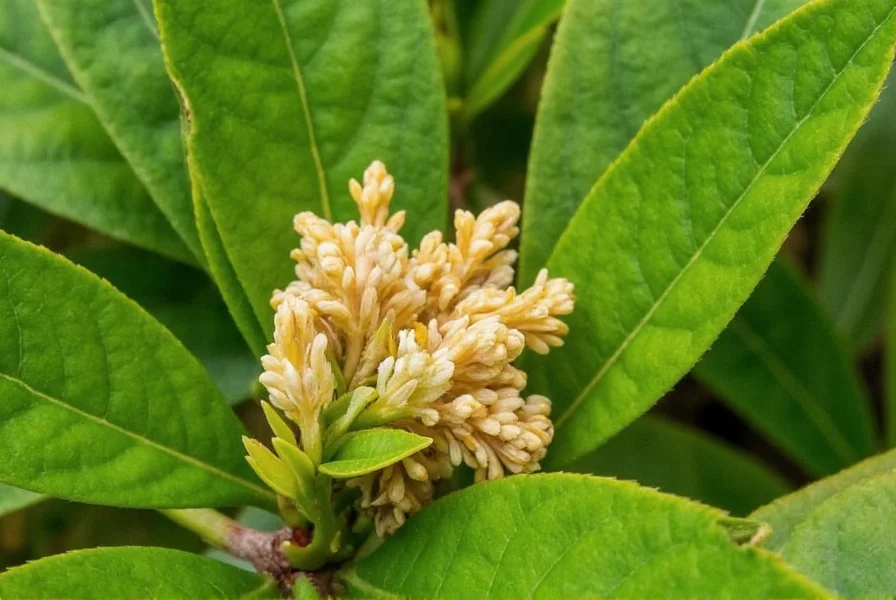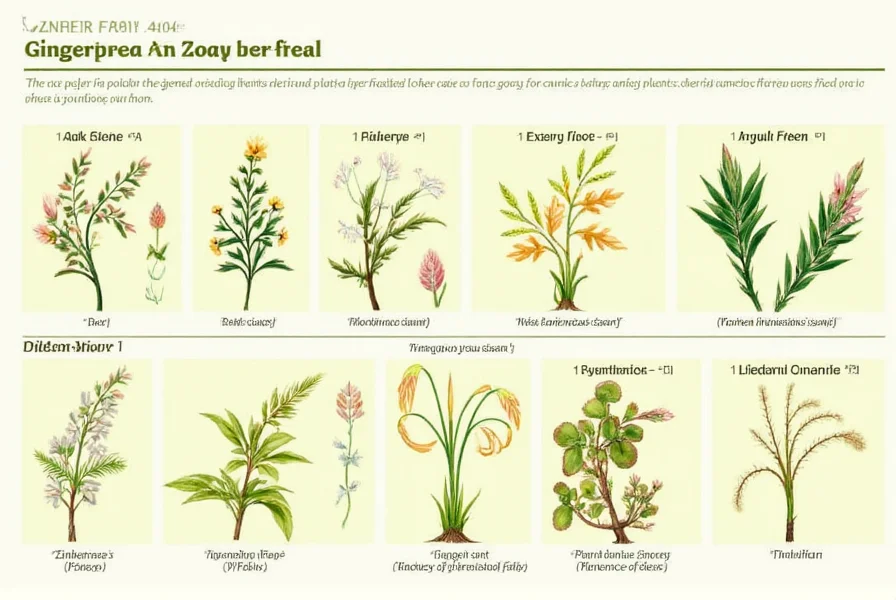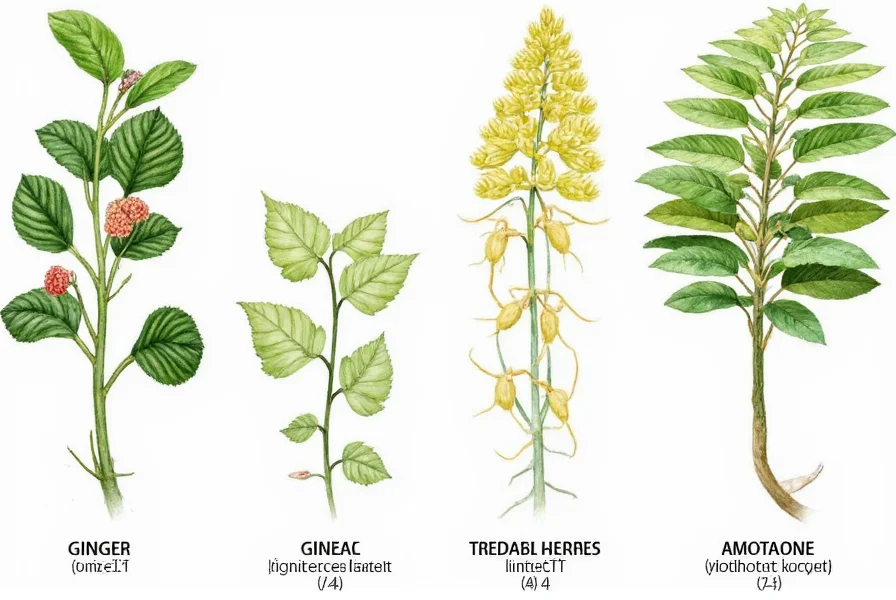Ginger's botanical classification places it firmly within the Zingiberaceae family, one of the most economically important plant families in tropical regions worldwide. Understanding the ginger family reveals why these plants share similar growth patterns, chemical compounds, and traditional uses across diverse cultures. This comprehensive guide explores the scientific classification, distinctive characteristics, and notable members of this fascinating plant family that has shaped cuisines and traditional medicine systems for millennia.
Botanical Classification of Ginger
The precise taxonomic placement of ginger follows this hierarchy: Kingdom Plantae (plants), Clade Angiosperms (flowering plants), Clade Monocots, Order Zingiberales, and Family Zingiberaceae. Within this family, ginger belongs to the genus Zingiber, with the scientific name Zingiber officinale. This classification explains why ginger shares biological characteristics with other Zingiberaceae members while maintaining its unique properties.
Defining Characteristics of the Zingiberaceae Family
Plants in the ginger family share several distinctive botanical features that set them apart from other plant families. These characteristics explain why ginger and its relatives have been recognized as a distinct botanical group since early taxonomic studies.
| Characteristic | Description | Significance |
|---|---|---|
| Rhizomatous growth | Horizontal underground stems that store nutrients | Source of culinary and medicinal compounds |
| Distinctive flower structure | Irregular flowers with fused petals and prominent stamens | Adaptation for specific pollinators |
| Aromatic compounds | High concentration of terpenes and phenolic compounds | Responsible for flavor, scent, and medicinal properties |
| Tropical origin | Native to tropical regions of Asia and Africa | Requires warm, humid conditions for optimal growth |
Major Genera Within the Ginger Family
The Zingiberaceae family comprises approximately 50 genera, each with unique characteristics and uses. Understanding these genera helps clarify the relationships between different "ginger" plants that share the family but serve different purposes.
Zingiber Genus: True Gingers
The Zingiber genus contains the most familiar culinary ginger (Zingiber officinale) along with approximately 140 other species. These plants typically feature:
- Knotted, aromatic rhizomes with yellow to white flesh
- Leafy stems growing 2-3 feet tall
- Purple or green flower spikes
- High concentrations of gingerols, the compounds responsible for ginger's characteristic heat
Curcuma Genus: Turmeric and Relatives
Curcuma includes turmeric (Curcuma longa) and several ornamental gingers. Key features include:
- Rhizomes that produce the yellow-orange pigment curcumin
- Often more vibrant flower colors than true gingers
- Widely used in traditional medicine systems
- Some species produce edible flowers used in Southeast Asian cuisine
Alpinia Genus: Galangal and Shell Gingers
The Alpinia genus contains approximately 250 species, including:
- Greater galangal (Alpinia galanga) - essential in Thai and Indonesian cooking
- Shell gingers (Alpinia zerumbet) - named for their shell-like flowers
- Midwinter blooms (Alpinia purpurata) - ornamental species with striking flowers

Economic and Cultural Significance of the Ginger Family
The Zingiberaceae family represents one of the most economically valuable plant groups globally, with applications spanning multiple industries. Understanding what family does ginger belong to reveals why these plants have been cultivated and traded for thousands of years.
Culinary Applications
Plants from the ginger family contribute distinctive flavors to cuisines worldwide:
- Ginger (Zingiber officinale) - used fresh, dried, or powdered in Asian, Indian, and Caribbean cuisines
- Turmeric (Curcuma longa) - provides color and earthy flavor to curries and mustards
- Cardamom (Elettaria cardamomum) - prized spice in Scandinavian and Middle Eastern baking
- Galangal (Alpinia galanga) - essential ingredient in Thai tom yum soup
Medicinal Uses Across Cultures
The shared biochemical properties within the ginger family explain why multiple members have been used in traditional medicine systems:
- Ginger's anti-nausea properties recognized in Ayurveda and Traditional Chinese Medicine
- Turmeric's anti-inflammatory compounds studied for modern therapeutic applications
- Lesser galangal (Alpinia officinarum) used in European folk medicine for digestive issues
- Common biochemical pathways producing similar therapeutic effects across the family
Growing Conditions for Ginger Family Plants
Understanding the natural habitat of Zingiberaceae plants explains their cultivation requirements. Most members share similar environmental preferences due to their evolutionary history in tropical regions.
These plants typically thrive in:
- Warm temperatures between 75-85°F (24-29°C)
- High humidity environments
- Well-draining, organically rich soils
- Partial shade to full sun depending on species
- Consistent moisture without waterlogging
Ginger family plants generally cannot tolerate frost, which explains their historical concentration in tropical and subtropical regions. Modern cultivation techniques have expanded their range, but they remain sensitive to cold temperatures.
Scientific Research on the Ginger Family
Contemporary research continues to reveal the complex biochemistry that unites plants in the Zingiberaceae family. Studies on the botanical classification of ginger root and related species have identified shared metabolic pathways that produce valuable compounds.
Recent findings include:
- Common biosynthetic pathways producing gingerols in Zingiber and related compounds in other genera
- Shared defense mechanisms against pathogens through volatile organic compounds
- Genetic markers that help distinguish between closely related species
- Evolutionary relationships showing how different genera diverged from common ancestors

Common Misconceptions About the Ginger Family
Several misconceptions persist about plants in the Zingiberaceae family that deserve clarification:
- Misconception: All plants called "ginger" belong to the same genus
Reality: Many plants have "ginger" in their common name but belong to different genera (e.g., pinecone ginger is Zingiber zerumbet, while shampoo ginger is Zingiber zerumbet) - Misconception: Ginger and turmeric are closely related species
Reality: They belong to different genera (Zingiber vs. Curcuma) within the same family, making them botanical cousins rather than siblings - Misconception: All members of the ginger family are edible
Reality: While many are culinary staples, some species contain compounds that can be irritating or toxic when consumed
Conclusion
The Zingiberaceae family represents a remarkable botanical group with profound cultural, economic, and scientific significance. Understanding the ginger plant family members reveals the evolutionary connections that explain their shared characteristics and diverse applications. From the familiar ginger root in your kitchen to the ornamental gingers brightening tropical gardens, these plants continue to enrich human life in countless ways. As research advances, we continue to uncover new insights about this important plant family and its potential contributions to food security, medicine, and sustainable agriculture.
Frequently Asked Questions
What family does ginger belong to botanically?
Ginger belongs to the Zingiberaceae family, a large family of flowering plants that includes approximately 50 genera and over 1,600 species. This family is characterized by aromatic rhizomes, distinctive flower structures, and tropical origins. The scientific name for common culinary ginger is Zingiber officinale, placing it in the Zingiber genus within this family.
What are the main differences between ginger and turmeric within the same family?
While both ginger (Zingiber officinale) and turmeric (Curcuma longa) belong to the Zingiberaceae family, they differ in several key aspects. Ginger contains gingerols that give it its characteristic heat, while turmeric produces curcumin, which gives it a bright yellow color and earthy flavor. Ginger rhizomes are typically pale yellow with a thinner skin, while turmeric has deep orange flesh and a thicker, brownish skin. They also have different medicinal properties and culinary applications despite their botanical relationship.
Are all plants in the ginger family edible?
No, not all plants in the Zingiberaceae family are edible. While many members like ginger, turmeric, cardamom, and galangal are culinary staples, some species contain compounds that can be irritating or toxic when consumed. For example, some ornamental gingers produce compounds that cause skin irritation. It's important to properly identify plants before consumption, as common names can be misleading and some species that look similar may not be safe to eat.
How can I grow ginger family plants outside tropical regions?
Ginger family plants can be grown outside tropical regions with proper care. They require warm temperatures (75-85°F), high humidity, and protection from frost. In temperate climates, they can be grown as container plants that are brought indoors during colder months. Choose a location with partial shade, use well-draining soil rich in organic matter, and maintain consistent moisture without waterlogging. Some hardier species like certain gingers can survive in USDA zones 7-10 with winter mulching for protection.
What makes the ginger family economically important?
The Zingiberaceae family is economically important due to its diverse applications across multiple industries. Ginger, turmeric, and cardamom are major global spice crops with significant trade value. Many members have medicinal properties that support traditional and modern pharmaceutical industries. Additionally, numerous species serve as ornamental plants in horticulture. The family's aromatic compounds are also used in perfumery and cosmetics. Collectively, these applications make the ginger family one of the most valuable plant groups worldwide.











 浙公网安备
33010002000092号
浙公网安备
33010002000092号 浙B2-20120091-4
浙B2-20120091-4